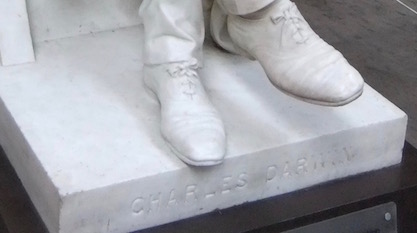 Evolution
Evolution
Darwin and Data — “Cutting the Toes to Fit the Shoe”


Science historian Michael Flannery had a really rich and fascinating discussion with CSC research coordinator Brian Miller about Darwin’s materialism — its origins and the fruit it finally bore. Listen to the ID the Future podcast here, or download it here.
The popular picture of Charles Darwin casts him as the assiduous, objective gatherer of scientific data, only reluctantly reaching the conclusion he did: life as the product of strictly unguided material forces. In fact, as Professor Flannery explains, the groundwork or “template” of Darwin’s materialism had been established years before, through the influence of family and friends — notably at the University of Edinburgh where he joined the free-thinking Plinian Society and met Robert Edmund Grant.
The seeds of his thinking were planted well before our scientist embarked on the Beagle or set foot on the Galápagos Islands. It was largely a case of “cutting the toes to fit the shoe” — theory first, worry about the data later.
Flannery tells how the great man, his family, and followers contributed to the myth of Darwin as a fact-driven scientist, much as they sought to massage the reality of Darwin’s “agnosticism,” which is a less aggressive way of saying his “atheism.” Professor Flannery recounts the lunch meeting Darwin had before his death with a pair of visiting atheists, Aveling and Büchner, a published account of which Charles’s son Francis was at pains to spin just so.
Why does it matter? Because Darwinists follow much the same path today. Blindness to evidence of design in biology, the refusal to consider this evidence, is a function of the backwards relationship between theory and data. As Cornelius Hunter remarked here yesterday about contemporary Christian Darwinian biologist Dennis Venema, Charles Darwin himself was a “an evolutionist waiting to happen.”
Flannery is a great source of background and insight. Listen to the podcast now.
Photo: Detail of Darwin statue, Natural History Museum, London, by Rept0n1x (Own work) [GFDL or CC BY-SA 3.0], via Wikimedia Commons.
